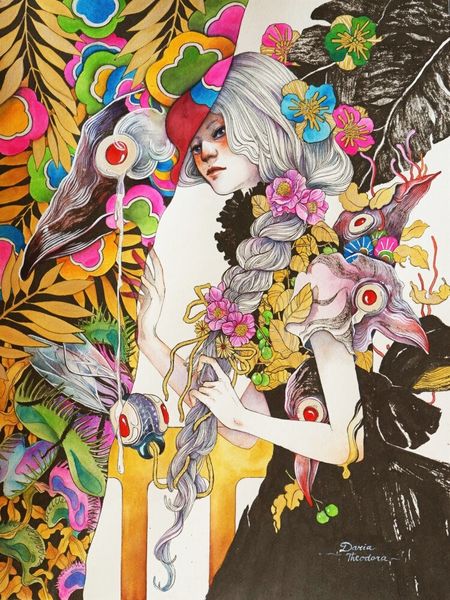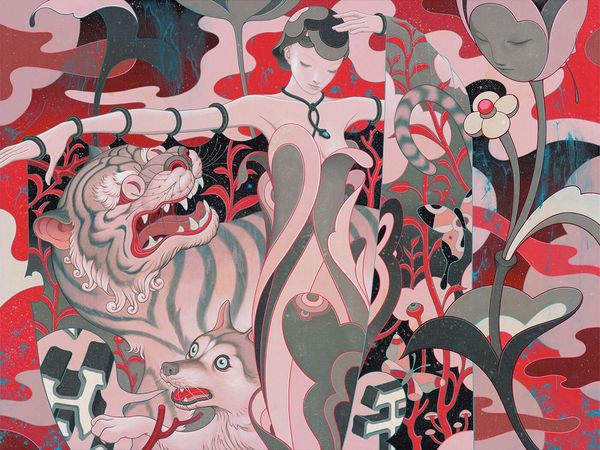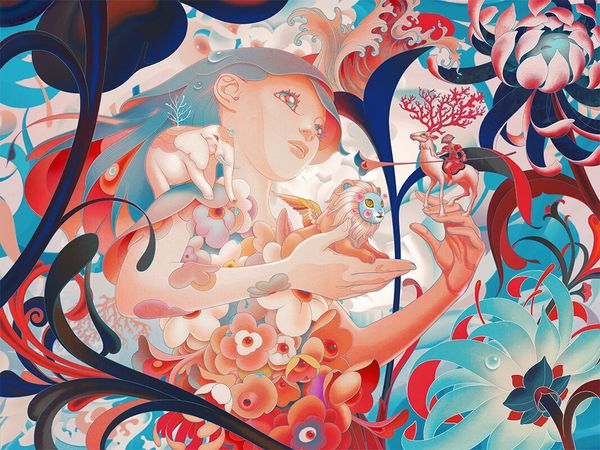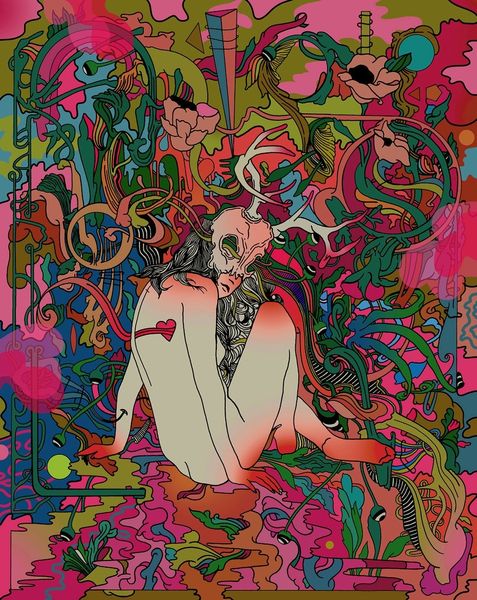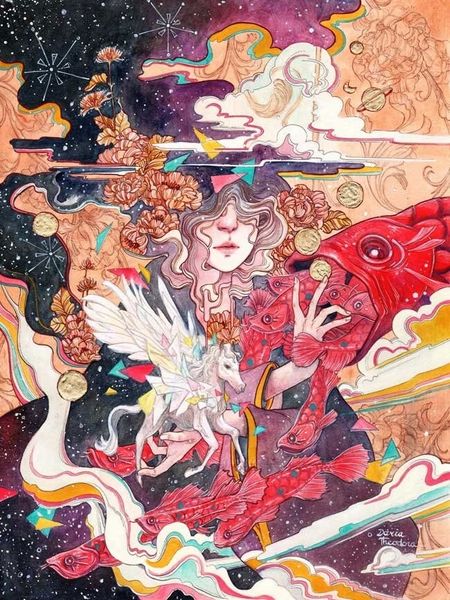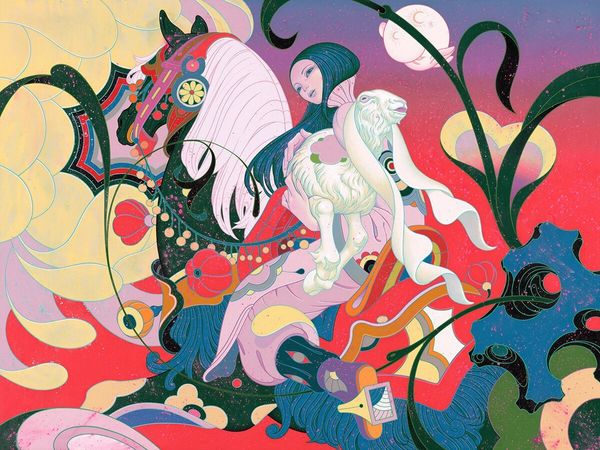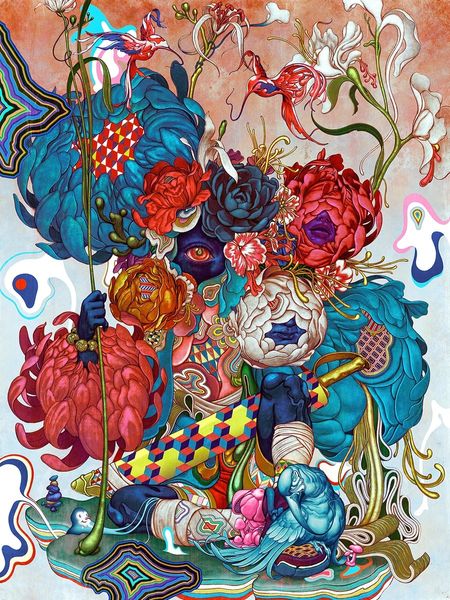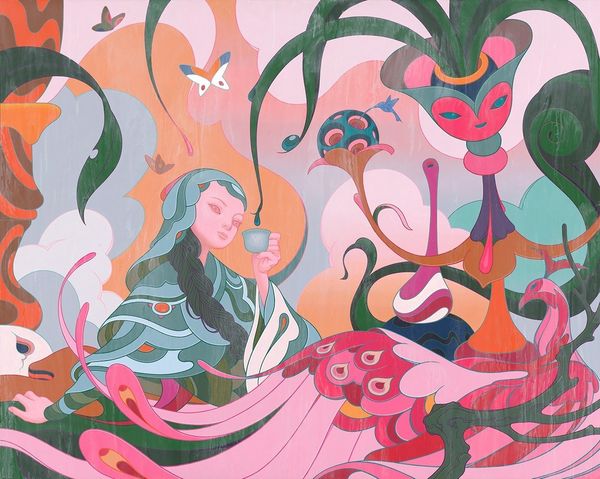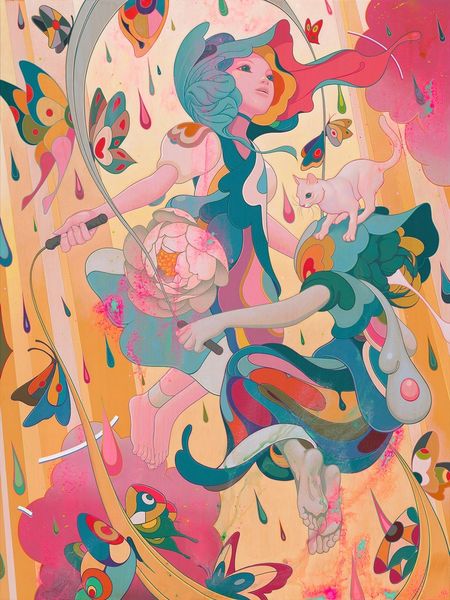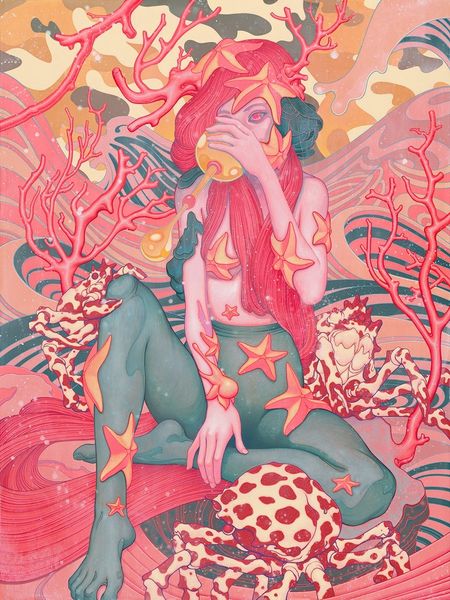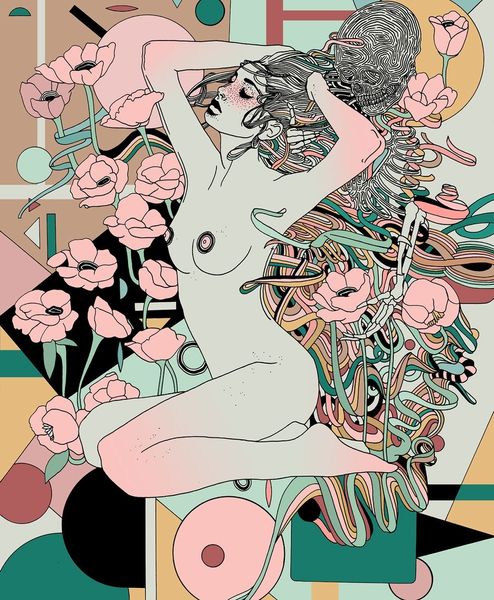
Copyright: Modern Artists: Artvee
Curator: James Jean’s "Pistil and Stamen," created in 2017, presents a mesmerizing composition rendered in acrylics. What strikes you most about this work? Editor: Initially, I'm overwhelmed by a feeling of opulent tension. The intertwining of organic forms and those striking figures... there’s something almost aggressively feminine about it. Curator: It’s fascinating how Jean merges seemingly disparate elements – classic figuration with the energetic chaos often associated with pop-surrealism. He gained considerable visibility initially through his commercial illustration work before transitioning to the fine art world, and it feels like his works occupy a space questioning boundaries and hierarchies in art production. Editor: Precisely! Looking closer, the floral motifs vibrate with coded symbolism. Flowers, throughout history, have signified everything from fleeting beauty and fertility to mourning. Note how the figures are nestled and intertwined among the blossoms—what interpretations of vulnerability, intimacy or possibly oppression might Jean evoke with his choices here? Curator: His visual language owes a debt to Art Nouveau, too. That earlier movement embraced organic, flowing forms and sought to erase divisions between art and craft. "Pistil and Stamen" employs these elements, perhaps critiquing or re-evaluating those earlier ideals within a contemporary framework where definitions of “high” and "low" culture are even more blurred. Editor: The almost graffiti-like overlay of colors suggests layers of hidden meanings, don't you think? It evokes the psychedelic experience of peering into a vivid dream. I almost wonder if Jean might be referencing certain archetypes that repeat in different forms throughout cultures and historical epochs? Curator: And it also encourages us to consider what those historical readings and associated expectations and experiences mean when filtered through contemporary experience. Editor: Agreed. Ultimately, what endures about “Pistil and Stamen” is that it delivers visual excitement and allows viewers multiple entry points, regardless of background. Curator: It shows us that symbols change shape but somehow their impressions, meanings, stay relevant. A work like this allows art institutions to demonstrate visual storytelling, memory and imagination in visual arts and cultures.
Comments
No comments
Be the first to comment and join the conversation on the ultimate creative platform.
